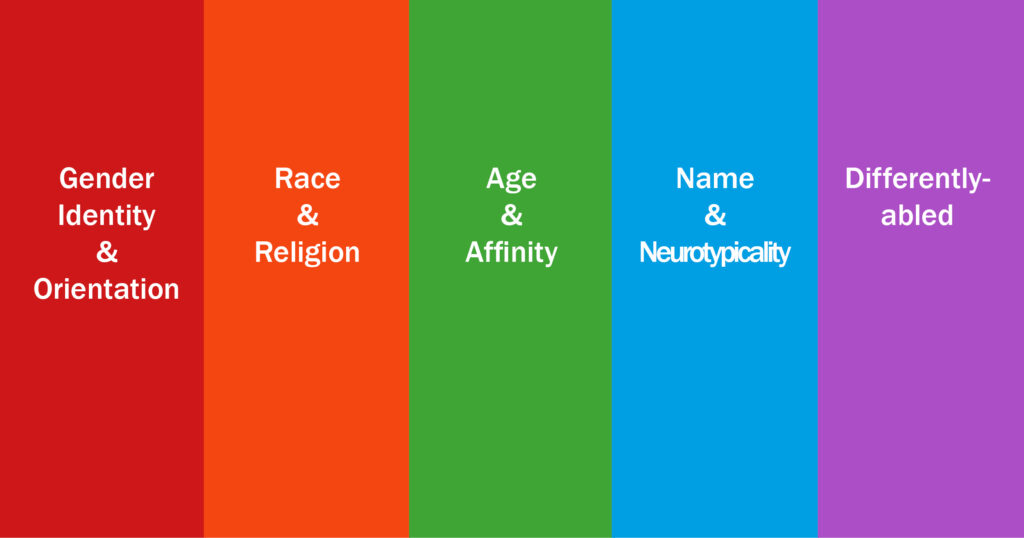Is your US Workforce a GRAND Rainbow?
Diversity, equity, and inclusion (DEI) are good for business, good for people, and good for communities.
If you are not considering the impact of DEI on the success of your organization, you are missing an important business strategy. The results of DEI awareness on business are well documented. The world-renowned consulting firm, McKinsey, has reported a strengthening relationship between diversity on executive teams and financial performance.
Research by Deloitte showed diverse companies have 2.3 times higher cash flow per employee. Boston Consulting Group’s research showed a similar result where companies with diverse management teams had 19% higher revenue than their non-diverse counterparts.
Aside from the dollars and cents, in the 21st century, you must continually raise your awareness of those who are different from you to be a socially responsible person.
The changing face of the US workforce means you must embrace DEI. Millennial workers are 16% more diverse than Baby-Boomers. Forty-eight percent of Generation Z workers are racial or ethnic minorities. Millennials and Gen Z workers have made a generational shift in their values and views of systemic racism in the US according to Alvin B Tillery Jr., director of the Center for Diversity and Democracy at Northwestern University. In a September 2021 survey, Glassdoor found that 76% of job seekers and employees identified a diverse workforce as an important factor in evaluating a job offer.
Before we get into the details of the value of a DEI workforce, let’s address three common objections of why DEI initiatives are not adopted in a workplace and what the solutions might be.
It won’t work for us because…
Concern #1 – Our industry is not very diverse, so diversity in the workplace is not possible.
We are all aware that there are male- and female-dominated industries – engineering and HR, to name two. However, just because they have been historically imbalanced doesn’t mean they are today. It certainly doesn’t mean that there aren’t many candidates of the industry’s non-dominate gender who can contribute and excel in your company. For a host of reasons, you may find a glut of people of the same age, gender, race, or religion in your pool of candidates. The key is to dig beyond the surface. Building a diverse workforce has to be intentional.
Be sure to investigate all candidates paying particular attention to those who don’t look like, speak like, or think like you, the company leadership, or most of your employees. You’ll likely be pleasantly surprised at the quality of candidates when you look further than those you may not have previously noticed.
Concern #2 – We want the best person for the job, not just someone to meet a quota.
So, who is the best person to be the President of the United States? Who is the best Supreme Court Judge? Finding those answers is like asking ‘Who is my soulmate?’ The reality is, there isn’t just one person who can be wildly successful in the position.
Before interviewing or promoting employees, be sure you know exactly what characteristics and skills are critical for success in the position. One of those variables should be diversity. We’ll talk more about the business value of diversity, but for now, trust us on this one. If you are hiring someone who has the same background as most of your other employees, you are doing your company a disservice by not broadening your search. It may feel comfortable and easy to connect with someone who went to the same school as you did, or with whom you share other types of ‘affinities’; however, you may also find that the thinking of your team is too narrow to bring innovation to your company. Diverse teams make better business decisions 87% of the time according to the decision-making platform, Cloverpop.
Concern #3 – We’re a small company and too many different types of people won’t build a strong team.
People from differing backgrounds, religions, native languages, cultures, backgrounds bring varied experiences, mores, and viewpoints. Learning how to have an inclusive and equitable workforce takes intention and it isn’t easy.
Providing implicit bias training is critical to the success of a melting pot of employees. At Foothold America, we’ve had trainings and discussions about implicit bias. Every employee who participated reported being enriched by the experience. We are a better, more dynamic team as a result. And because our clients are from around the world, we are better positioned to serve those from various countries and cultures.
What is a GRAND rainbow company and why is it important?
According to experts, there are many ways we are unconsciously biased. All of us. In one way or another. Rachel Wilson of the EW Group says, “unconscious bias, also known as implicit bias, is what happens when we act on subconscious, deeply-ingrained biases, stereotypes, and attitudes formed from our inherent human cognition, experiences, upbringing, and environment.”
Lack of awareness about inherent bias can leave you with a company plagued by groupthink and low innovation. Let’s look at the most common forms of unconscious bias in the rainbow below and see how they can impact the workplace experience.

Gender – US women in the workforce make $.82 on the $1.00 compared to US men. While there is less disparity when all factors are controlled, women still earn less than men for the same experience, education, and position.
A study from Croner in 2022 reported that more than 40% of LGBTQ+ employees feel their organisation’s policies are inadequate for dealing with gender and sexual orientation discrimination and more than 10% had their sexual or gender identity disclosed without their permission.
Race – US workers who identify as black or latin earn anywhere between $.69 to $.75 per dollar compared to their white counterparts. The disparity continues up the ranks of US businesses. Only 1% of US CEOs are black, whereas 13% of the US population is black. There is a similar under-representation of Latin and Asian professionals in the C-suite.
Age – Living longer and reduced social safety nets mean Americans are working later in life, delaying retirement. There could be a 50-year age difference between employees. Because older employees may lack technology skills and earn more money than younger workers, they can be pressured to retire or susceptible to unlawful termination. This is just one outcome of ageism in the workplace.
Name – How many times have you felt like you’ve had a mouthful of marbles when trying to pronounce the name of a person whose ethnicity is different from yours? A simple matter of pronunciation can create discomfort or conflict in the workplace. It can even prevent someone from being considered for an interview.
Here are a few to try.
Name | Ethnicity | Pronunciation |
| Cholmondeley | English | Chum-ley |
| Nguyen | Vietnamese | Win |
| Ramamoorthi | Indian | RA-ma-moor-tee |
| Fawehemi | Nigerian | FAH-weh-mee |
| Moloughney | Irish | Mo-LOCK-ney |
Differently-abled – In the US, the Americans with Disabilities Act (ADA) was enacted in 1990 by President George H W Bush making accessibility and workplace accommodation a requirement thus creating more equitable spaces for millions of Americans. Still, professionals with differences from their co-workers due to dyslexia, autism, bipolar disorder, depression, vision impairment, wheelchair use, prosthetics, and many more find acceptance in the workplace is limited by ability bias. Unemployment is higher among differently-abled populations. Differently-abled employees are often expected to act, work, and think like neurotypical workers.
What can we do to have a more Diverse, Equitable and Inclusive workplace?
Step by step, you can make a difference in yourself, your team, and your company. This in turn makes a difference in your community, country, and world.
Step 1 – Start from the inside out. Make a conscious decision to improve DEI in your personal and professional life. Become a learning machine and integrate this information into your mindset and actions. Give this short entertaining video a look.
Step 2 – Ingrain DEI in the DNA of your company. Make sure your marketing materials, webinar guests and website images reflect diversity. Train your employees to understand and recognize implicit bias and work to overcome it.
Step 3 – Seek diverse suppliers. While you are researching potential suppliers, be sure to check the staff, management, or board on their website or LinkedIn. If diversity is lacking there, you may not have found the most innovative or socially responsible option. Keep looking.
Step 4 – Don’t stop. You will make progress and impact the world with your open-mindedness. Keep moving forward even when it’s uncomfortable and teach others along the way.
Here are a few comprehensive resources to guide you:
- Tech Nation Diversity and Inclusion Toolkit
- SHRM webcast – New Frontier of Diversity, Equity and Inclusion
Foothold America is committed to a diverse, equitable, and inclusive workforce and we hope you’ll consider making DEI part of your company strategy. Best wishes for your company to become a GRAND rainbow.
Contact us at HR@footholdamerica.com if you’d like more ideas.

